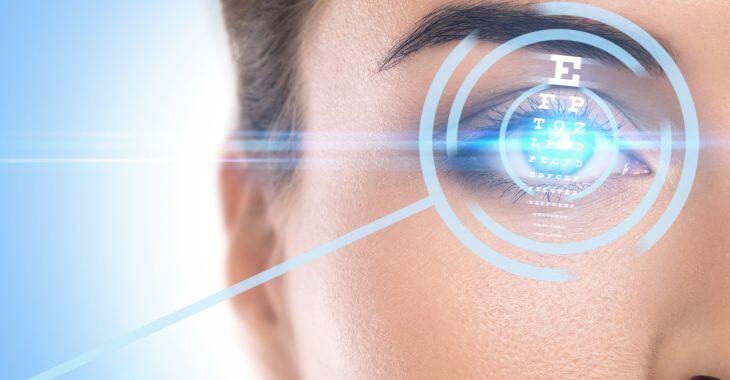How Does LASIK Work?

Laser-assisted in situ keratomileusis, commonly called by its acronym LASIK, is the most commonly performed laser eye surgery. This procedure can fix many vision problems that require wearing glasses or contact lenses; but you may wonder, how does LASIK work?
The cornea, which is the dome-shaped clear tissue in the front of the eye, is responsible for bending light before it reaches the retina. For those with normal vision, the cornea bends the light correctly for clear sight, near and far. If the cornea is misshapen, it can result in:
- Myopia – nearsightedness, which means it difficult to see far away
- Hyperopia – farsightedness, where it is difficult to see items up close
- Astigmatism – this condition causes blurred near and far vision
While glasses or contact can correct the vision caused by a misshapen cornea, wearing these devices can be a chore. With LASIK, many people are able to live free from vision correction devices as the surgery can permanently alter the shape of the cornea with a cutting laser.
Undergoing LASIK Eye Surgery
The actual LASIK surgery is performed in a quick, outpatient procedure. Once a patient is cleared to have the procedure, their doctor will explain what to expect the day of the surgery and during their recovery. Patients need to have an adult accompany them to the procedure to ensure they get home safely.
Most patients will receive some type of sedation to keep them relaxed and a numbing agent for the eyes. While the patient lies on their back, a device is used to keep the eye open during the procedure. Patients can expect to be awake but relaxed by medication. During the procedure:
- A suction ring is placed on the eyelid, which can dim vision and cause a feeling of pressure
- A small flap is cut to access the cornea
- The patient is asked to focus on a light while the doctor begins to shape the cornea with a laser
- The programmed laser precisely removes portions of the cornea to create the desired curvature
- One or both eyes can be completed the same day
- Once completed, the flap is closed
No stiches are needed for LASIK. The eye can heal and close the small incision that was needed to access the interior of the eye. The entire procedure only takes about a half hour per eye.
LASIK Recovery Time
For most people who have LASIK surgery, the downtime after the procedure. LASIK recovery time is usually only one day before the patient can return to most normal activities. After they return home with their friend or family member, it is suggested to sleep or relax the rest of the day.
After the LASIK procedure, the eye or eyes may be itchy, watery or feel “gritty.” Vision is normally somewhat blurred, but patients can see after the surgery. Most patients have very little pain, but eyedrops or pain medication may be prescribed to help with any discomfort.
How Long Does LASIK Last?
Vision correction for patients who have LASIK is not immediate. It does take 2-3 months for the eyes to completely heal and there may be some blurriness in the beginning. However, once the eye heals, many patients are able to achieve 20/25 vision or better.
The results of LASIK are permanent and most people are able to stop wearing their contacts or glasses. However, when answering the question, “How long does LASIK last?” the answer is not simple. While the changes to the cornea are permanent, it is still possible to have vision problems.
If the condition that caused the vision problems persists, the cornea shape may begin to change over time. Other factors such as aging, health conditions and the extent of vision impairment before LASIK can all impact vision after LASIK.
Some patients will need future LASIK to retain results. The younger the person is when they have LASIK, the higher chance that they may need additional procedures as their eyes change over time. It is estimated that about 30% will need another procedure after 10 or more years.
Who Is a Good Candidate for LASIK?
Most people with vision problems can undergo LASIK and have benefits to their vision. Those that have the best results are those who are slightly nearsighted – the more severe the vision condition, the higher risk there is for some vision issues after the procedure.
There are some people that are not great candidates for LASIK. If a person has certain autoimmune diseases, chronic dry eye, thin corneas, severe nearsightedness or some eye disorder, they may not qualify for the surgery.

If you ever wondered, “How does LASIK work?” now you know. It reshapes the cornea to correct the way light reflects into the retina, the same way that glasses and contacts impact vision. To learn more about LASIK, visit an eye specialist that offers this procedure.
The information provided on this website, including text, graphics, images, and other materials, is intended solely for informational purposes and should not be used as a substitute for professional medical advice, diagnosis, or treatment.




)